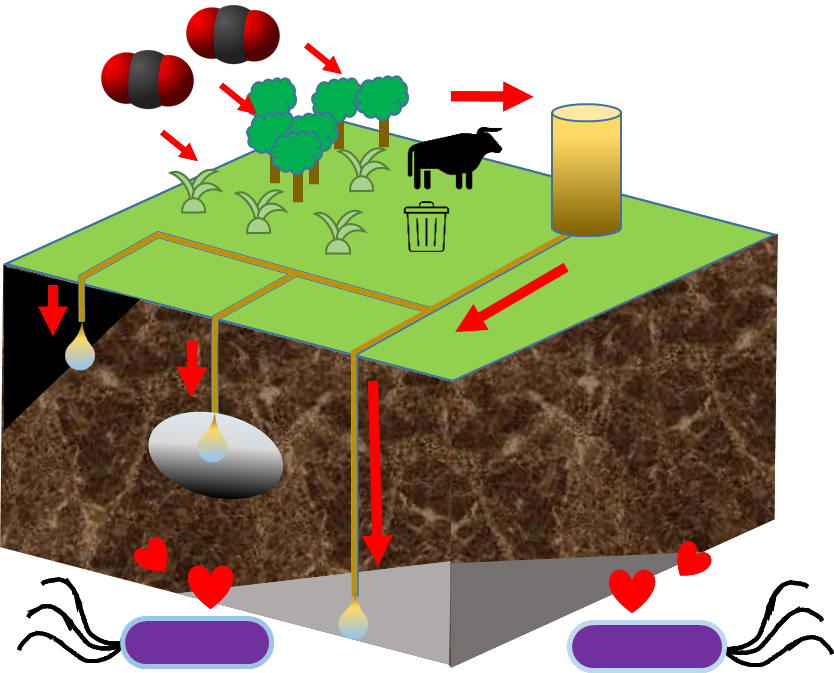
Hamilton-Brehm, Scott D 1 and Anderson Ken2
1Department of Microbiology, Southern Illinois University Carbondale, Carbondale, IL 62901; 2 Advanced Coal and Energy Research Center, Southern Illinois University Carbondale, Carbondale, IL 62901
Atmospheric concentration of carbon dioxide (CO2) is steadily increasing due to mining, production, and burning of carbon-based materials. The elevated CO2 levels trap long wavelength radiation from the sun, resulting in a ‘greenhouse effect’ that is affecting global climate. The expected increases in global surface temperature will result in widespread environmental and socio-political damage, costing many billions of US dollars and disrupting social structures. The capture and sequestration of CO2 (CCS) is lauded as being a strategic and economically viable means to offset negative effects on the environment and global economies. Unfortunately, the current methods of CCS do not approach the scales necessary to mitigate current rates of accumulation of atmospheric CO2, and are likely to continue to struggle to do so.
Bringing together the disciplines of geomicrobiology and chemistry, an energy efficient and sustainable method of achieving carbon negative sequestration is being developed. The method utilizes oxidative hydrothermal dissolution (OHD) for conversion of low value organic wastes to low molecular weight water-soluble products. Utilizing the most successful natural carbon capturing organism on this planet (plants) combined with highly efficient OHD conversion, the produced soluble carbon can be pumped underground into depleted oil reservoirs, deep saline aquifer and other suitable geologic storage sites as a concentrated aqueous solution, rather than a compressed gas. If successful, the net carbon removal is significantly negative, resulting over time a sustainable negation of industrialized carbon dioxide production on this planet.

